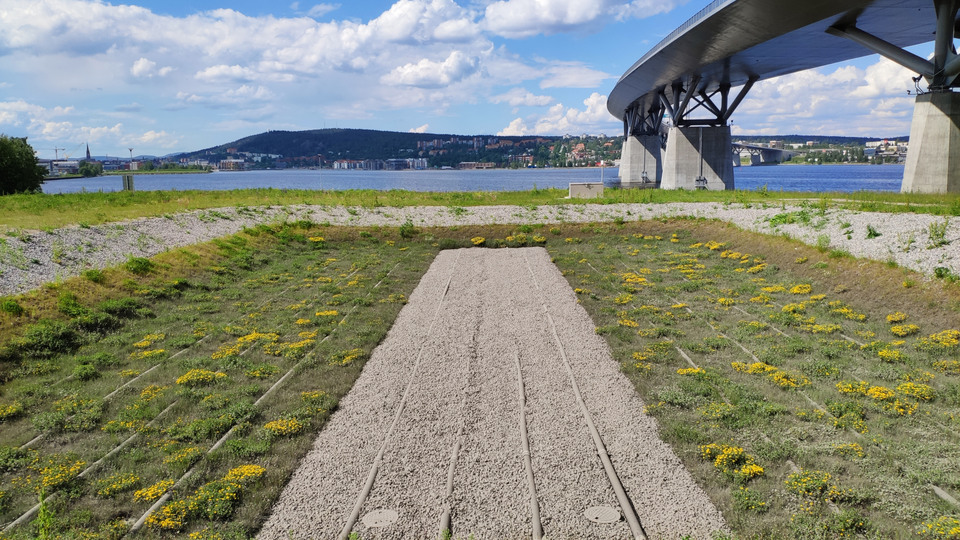
Photo: Luleå tekniska universitet
Purifies the E4 road stormwater from microplastics
Large amounts of rubber, asphalt and other types of microplastics and micro-debris accompany the stormwater runoff from the busy E4 highway at Sundsvallsbron, Sweden's third longest bridge. In a unique study, researchers at Luleå University of Technology together with IVL Swedish Environmental Research Institute investigated how effective a stormwater treatment plant is at cleaning microplastics from one of Sweden's busiest roads. The results are promising.
Stormwater from roads, parking lots and other urban surfaces is a distribution route for microplastics because it contains fragments from wear and tear of car tires and the road surface.
At the foot of the high-traffic Sundsvallsbron, a stormwater treatment plant has been built. The plant consists of several parts – partly a pre-sedimentation chamber in combination with oil separators, partly so-called stormwater biofilters that have been built with different types of design in order to enable research on which type of biofilter works best. Biofilter is a plant-covered infiltration surface where the stormwater infiltrates and is purified by filter material, the soil and the plants. One of the examined biofilters in Sundsvall was built without vegetation to be able to evaluate the importance of the plants. Biofilter is a relatively new treatment technology, but more and more such facilities have been built around Sweden in recent years.
The results show that the pre-sedimentation chamber had a limited ability to clean microplastics. However, the two types of biofilters examined had a good ability to clean microplastics. The type of biofilter that showed the best ability to clean microplastics was the one that was overgrown. This is good news according to the researchers in the study, as biofilters with vegetation are generally considered to be more aesthetically pleasing. They also require less maintenance than plant-free biofilters, as they are often less clogged.
Previous studies
The study External link, opens in new window. at Sundsvallsbron is unique because there are very few previous studies in the field. The study has been reviewed and accepted and will be published during the summer in Water Research, the highest ranked journal in the research area. The main authors are Katharina Lange, PhD student in VA technology at Luleå University of Technology, and co-author Maria Viklander, professor of VA technology at Luleå University of Technology, Godecke Blecken, assistant professor of VA technology at Luleå University of Technology, and Kerstin Magnusson, ecotoxicologist at IVL Swedish Environmental Research Institute.
External link, opens in new window. at Sundsvallsbron is unique because there are very few previous studies in the field. The study has been reviewed and accepted and will be published during the summer in Water Research, the highest ranked journal in the research area. The main authors are Katharina Lange, PhD student in VA technology at Luleå University of Technology, and co-author Maria Viklander, professor of VA technology at Luleå University of Technology, Godecke Blecken, assistant professor of VA technology at Luleå University of Technology, and Kerstin Magnusson, ecotoxicologist at IVL Swedish Environmental Research Institute.
For more information, please contact:
Kerstin Magnusson, kerstin.magnusson@ivl.se, +46 (0)10-788 69 07
Katharina Lange, katharina.lange@ltu.se, +46 (0)920-49 32 64
Maria Viklander, maria.viklander@ltu.se, +46 (0)920-49 16 34
The stormwater treatment plant has been built by the Swedish Transport Administration in collaboration with Central Sweden Water and Waste. Luleå University of Technology has participated in the design of the facility, and investigated the treatment efficiency in the mentioned research study together with IVL Swedish Environmental Research Institute.
